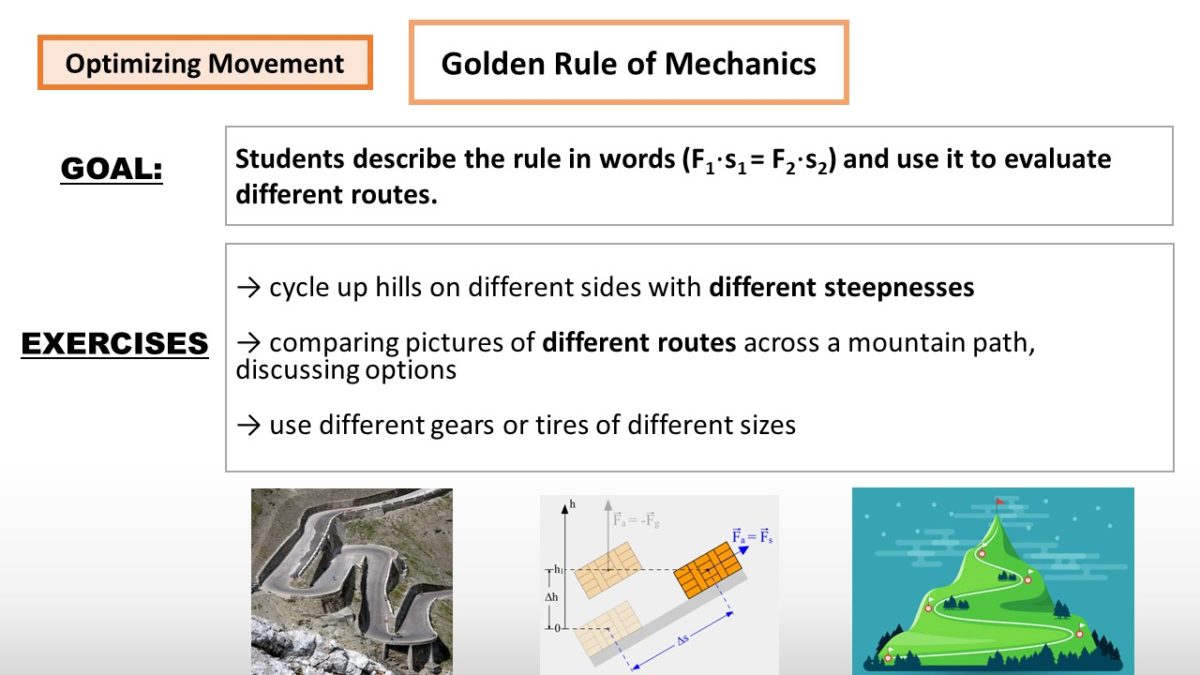This is a short overview (goals, exercises) about combining the topic of the inclined plane with the practice of cycling.
Goal(s):
- Students discuss how steepness affects the efficiency of cycling (OR)
- Students explain and apply different gear settings depending on the steepness of the slope
Exercises:
- trying out different gear combinations while cycling
- … on a horizontal plane
- …up a hill (at different angles)
- comparing travel distance per pedal cycle for different settings
- runners vs. cyclists on a steep slope –> who is faster – and why?
- Extra: Looking at the forces applying to the bicycle
Link to image: Inclined-Plane-Overview
Link to other lesson sketches: Cycling Topic Collection







